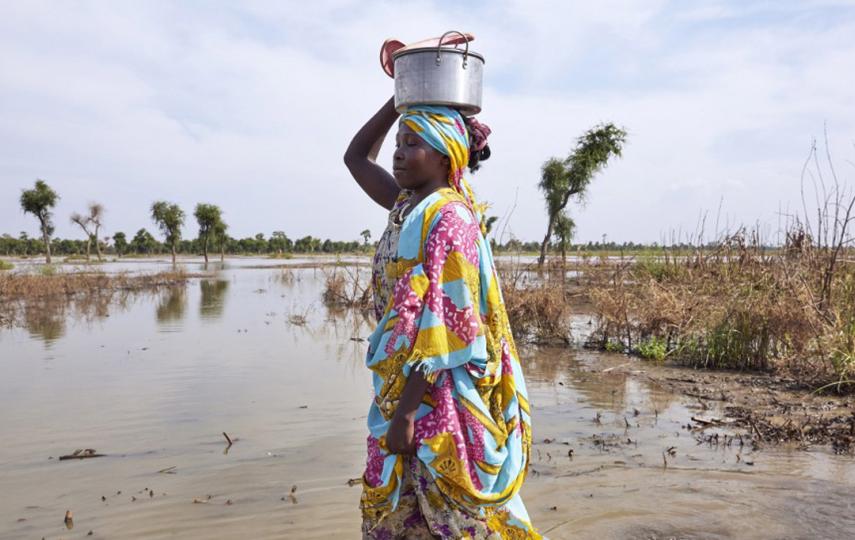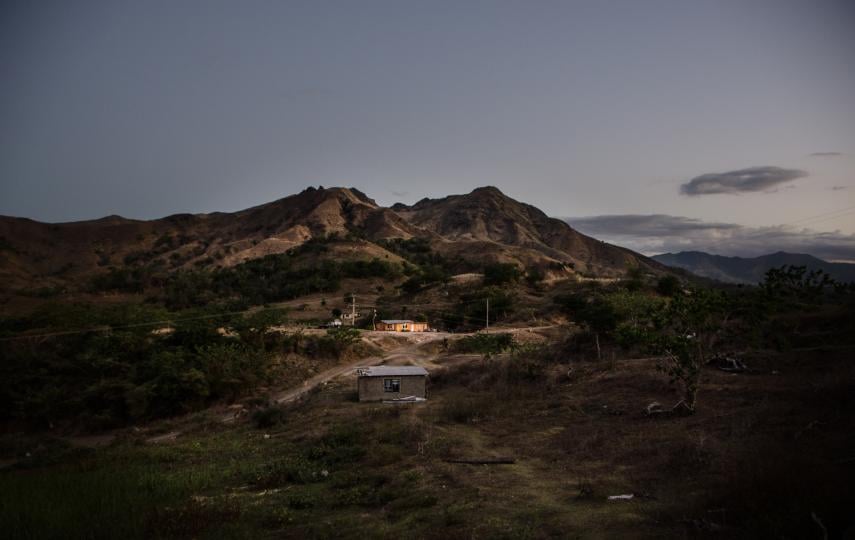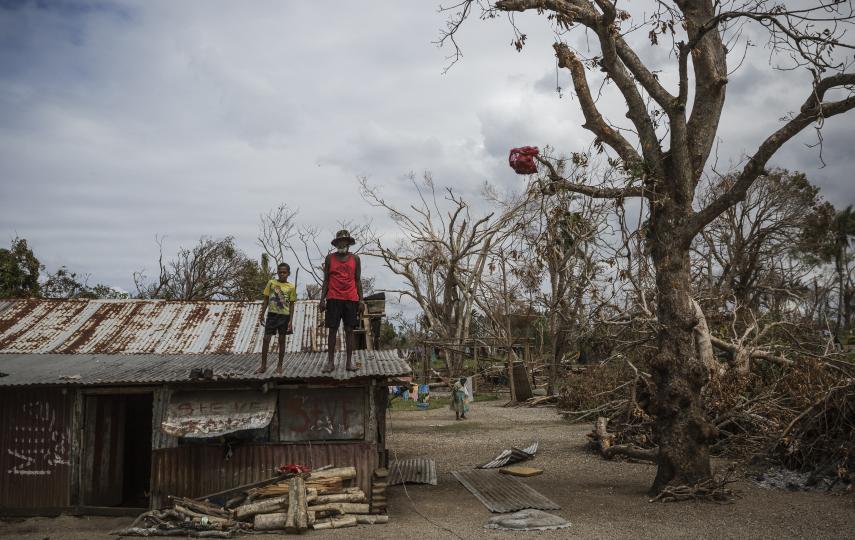Mounds of heavy stones are all that protects Jeffrey Daniels’ home from the waves that wash onto tiny Emao, an island dotting the Pacific nation of Vanuatu.
But the makeshift dams can’t stop his village from flooding during fierce tropical cyclones, tidal surges, or simply a heavy downpour.
“When the rain comes, we feel trapped as if we were standing on a ship,” Daniels said.
His home is located on an island strip less than 70 metres wide. When Daniels was a child, this land was twice as wide. Now his home and his village of Marow are vanishing, losing ground to the sea year by year. Where he used to play football, today there are only floating boats.
“If the sea levels continue to rise, this village will disappear,” he said. “Our community will disappear.”
Afraid that rising sea levels will swallow Marow within a few years, the entire village is planning to move to higher ground – a costly relocation that few here can afford. Many have already left for good, migrating to the capital, Port Vila, in search of work.
For Daniels, it’s the clearest sign of how climate change is disrupting lives, and forcing vulnerable communities to adapt or flee.
The powerful storms that tear through the Pacific are becoming more intense and more unpredictable. Extended droughts make staple crops harder to grow, and food more expensive. Lost income is driving migration away from land that had supported families for generations.
“When the rain comes, we feel trapped as if we were standing on a ship.”
These impacts from climate-linked weather extremes cause billions in damages in countries like Vanuatu, and in vulnerable areas around the globe. Economic costs may be quantifiable; but other losses when communities like Marow scatter – like tradition, culture, and identity – are immeasurable.
Some in Vanuatu are pushing back. Politicians and activists want to confront big polluters by suing for compensation for climate loss and damage. Their target: wealthy countries whose carbon emissions are most responsible for human-caused climate change.
They’re planning to bring the battle from battered communities like Marow to the halls of the UN General Assembly in New York, and to the world court, the International Court of Justice in The Hague.
There is no blueprint for this, and there are roadblocks ahead: Never before has one country sued another for climate change damage. They’ll have to raise political support, and prove the link between the rapidly heating climate and the disasters that hit Vanuatu’s communities.
But the proponents of this push believe it could be a precedent-setting case, setting out a roadmap for how countries might bypass global climate inaction and compensate for mounting loss and damage in a warming world.
Who pays for climate damages?
Vanuatu is a nation of some 300,000 people living on parts of 83 islands in the South Pacific Ocean. Like many Pacific countries and other low-lying, coastal areas, it’s frequently ranked as one of the world’s most vulnerable to climate change and extreme weather.
The impacts vary around the globe, but scientists say Vanuatu can expect sea-level rise, extreme temperatures, and more powerful cyclones. These effects are already taking a toll.
Cyclone Pam, which hurtled across Vanuatu in 2015, is the storm that most Ni-Vanuatu cite when it comes to extreme weather. One of the most powerful cyclones ever recorded in the Pacific, Pam caused immense destruction totalling at least 60 percent of the country’s gross domestic product.
The World Bank estimates that climate change could force more than 143 million people from their homes by 2050, driving massive internal migration. Rather than a single catastrophic event like Cyclone Pam, this mass movement of people would build as weather extremes layer one disaster on top of the next, sapping livelihoods, weakening food security, and overwhelming villages like Marow.
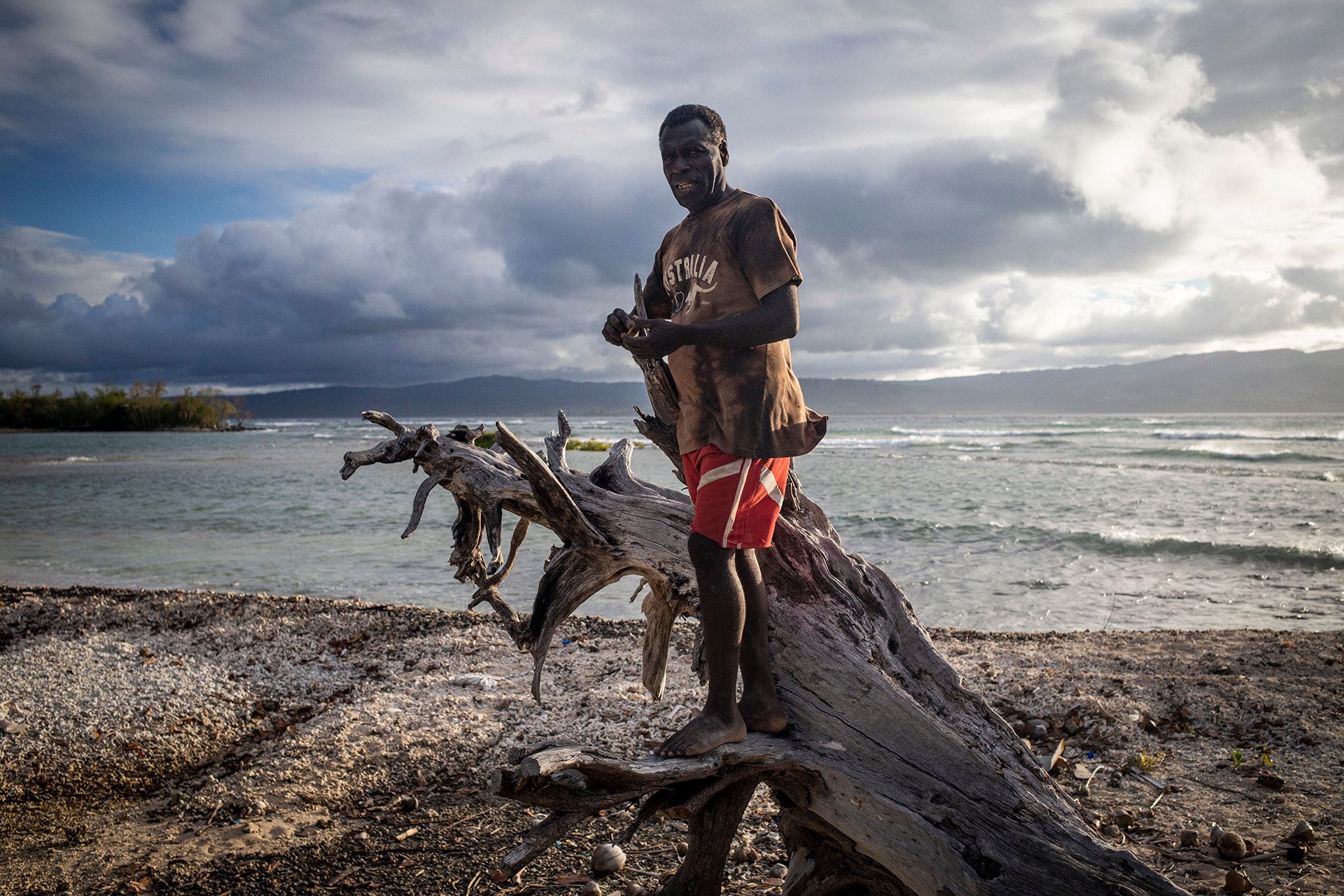
Pacific countries are tackling these threats in their own ways. The president of Kiribati, an atoll nation beset by rising seas, this year announced it would explore ways to raise its land. In 2018, Fiji developed national guidelines on relocating villages, and Vanuatu created policies governing disaster displacement caused by climate change – some of the first countries in the world to do so.
But the question of who will pay for climate loss and damages in the world’s most vulnerable nations – countries least responsible for their causes – remains.
Ralph Regenvanu, a prominent Ni-Vanuatu politician, has a simple answer. He’s behind the push to hold large countries accountable.
Speaking at a climate summit in 2018, Regenvanu, then the country’s foreign minister, announced plans to challenge governments and the fossil fuel industry using international law – to “shift the costs of climate protection”, as he put it.
Regenvanu has spent the ensuing months formulating his plan. He has created a task force of scientists, lawyers, and politicians in Port Vila to investigate legal avenues for a possible lawsuit. He has enlisted a law firm based in Guam, Blue Ocean Law, to work on a coherent strategy.
Vanuatu, Regenvanu said, is “always building back after a cyclone or disaster”, locked in costly recovery despite contributing little to climate change.
“Vanuatu is the country in the world which is most at risk from natural hazards according to the United Nations; we have been for many years. We are also a negligible polluter to greenhouse gases,” he said.
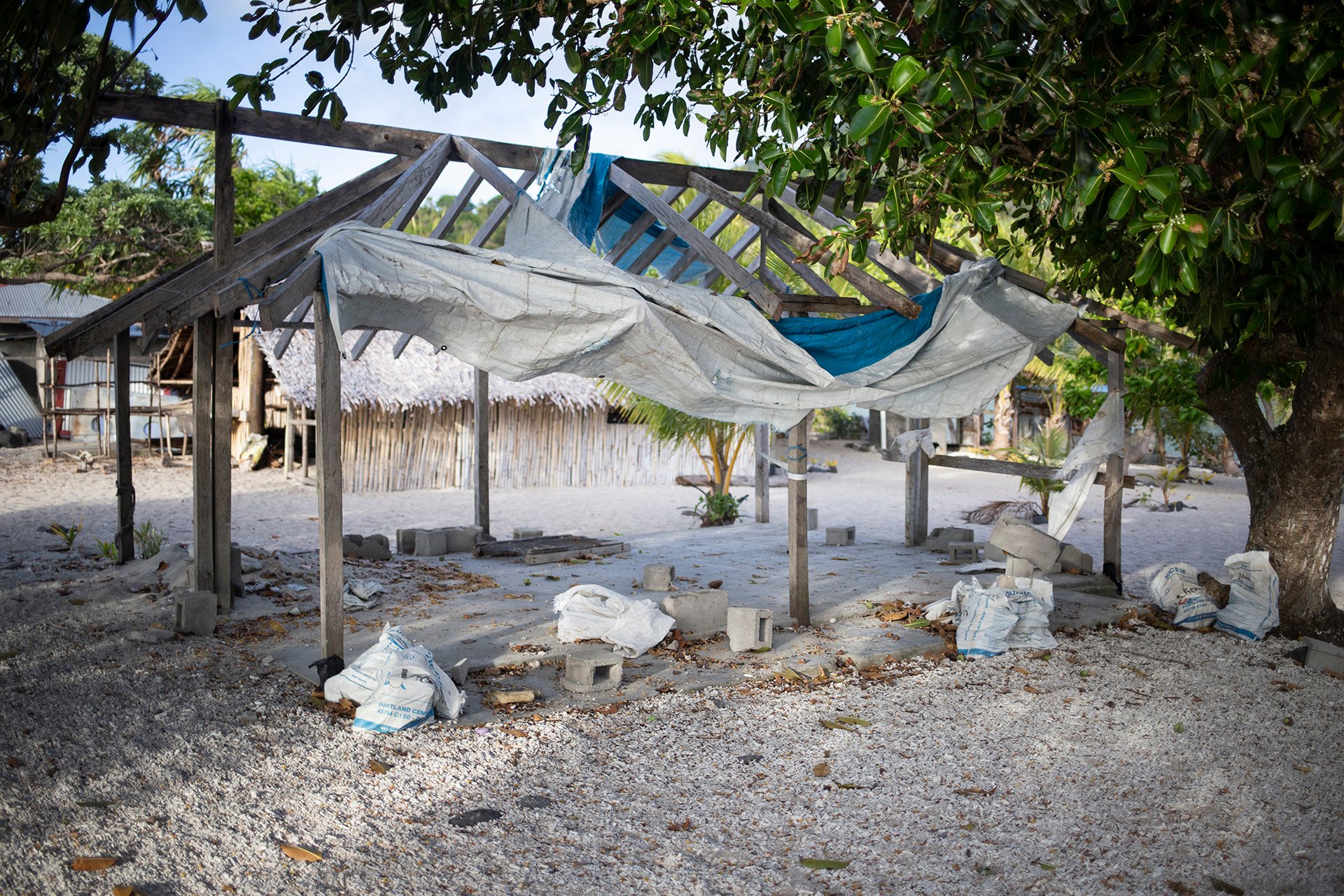
Regenvanu’s plan is to make his case before the International Court of Justice, or ICJ, which settles disputes between nations. He and his team want the ICJ to issue an “advisory opinion” – legal advice that can inform international law – that confirms industrialised nations are responsible for loss and damage in countries like Vanuatu.
The ICJ has issued 27 advisory opinions in its history, covering everything from territory disputes to the legality of nuclear weapons – but not a single one on climate change.
Its advisory opinions are non-binding, but Regenvanu believes a favourable decision will have symbolic power, setting a legal precedent that any court in any country could then use.
“We want, obviously, a decision that says, ‘yes, there are obligations by states that had been breached; there are grounds for damages to be paid by them who caused it’.”
“It would be the basis for agreements between states, multilateral decisions, even trade agreements under national law,” Regenvanu said. “We want, obviously, a decision that says, ‘yes, there are obligations by states that had been breached; there are grounds for damages to be paid by them who caused it’.”
In order to reach the ICJ, Vanuatu will have to find support at the UN’s General Assembly – one of the few entities, mainly UN bodies, authorised to request advisory opinions.
This would require Vanuatu to seek majority support from member nations – a daunting political challenge. But as the links between carbon emissions, climate change, and disasters’ humanitarian impacts have become clearer, there could be enough support, said Hermann Ott, a lawyer who heads the German section of ClientEarth, a charity specialising in environmental law.
“We have a much stronger public perception on that issue, because we are feeling the effects of climate change to a much greater extent,” said Ott, whose firm is not involved in Regenvanu’s planning. “That is why the chances are currently high that a majority will come together.”
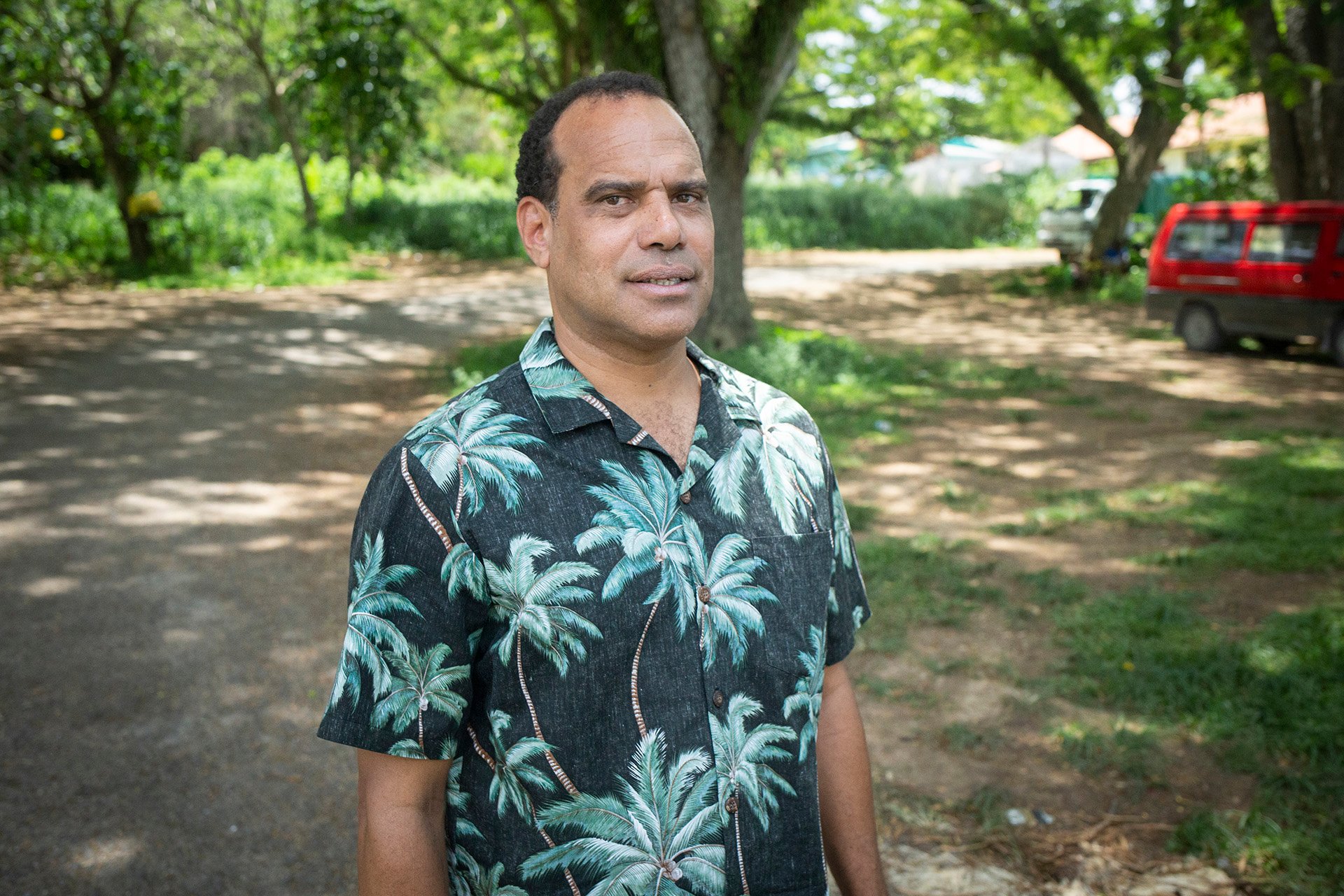
When The New Humanitarian visited Vanuatu in February, Regenvanu’s team was hoping his country would be ready to bring the argument to the General Assembly by the end of 2020. The coronavirus pandemic and national politics have upended these plans.
In March, the government declared a state of emergency for COVID-19 and shut its borders. In the same month, Regenvanu’s political party was defeated in parliamentary elections.
Now the opposition leader, Regenvanu hopes the current government will endorse his plan to challenge global polluters. Until that happens, however, everything is on hold.
Similarly, the pandemic has also put a pause on climate action worldwide. November’s COP26 climate summit was postponed until 2021, delaying a meeting in which countries were expected to commit to stricter emissions targets.
In the meantime, however, damage from climate-linked disasters continues. In April, Cyclone Harold barrelled across parts of the Pacific, causing widespread damage in Vanuatu’s northern islands. The government estimates more than 40 percent of the population were affected, and some communities were isolated without aid for weeks. It was Vanuatu’s most powerful storm since Cyclone Pam.
When adaptation isn’t enough
Violent storms like cyclones Harold and Pam may garner some headlines, but climate damages are often more subtle. Heat stress, changing rainfall patterns, and coastal erosion are already reducing agricultural yields, according to the government. Less food means less income for subsistence farmers, and greater health risks from malnutrition, childhood stunting, and non-communicable diseases.
Sitting on a plastic chair in front of her home, the waves splashing against the beach a few steps away, Joyce Daniels, Jeffrey’s wife, remembered Cyclone Pam as the first time she “saw” climate change – no leaves were left on the trees.
But the weather extremes go deeper: Her village was in the middle of the longest drought she could recall. Although it was the rainy season, not a drop had fallen from the sky for days.
“On this island, we live from rainwater,” Joyce said, burying her feet in the sand. “There is no river.”
Even the diet has changed. Crops that once were plentiful – lettuce, tomatoes, and a sort of spinach called island cabbage – are now harder or impossible to grow because the weather has become erratic. “It is dying,” Jeffrey said of the island’s agriculture.
A one-hour boat trip away on the island of Pele, Salome Kalo scanned the sky for rain as she walked through a small vegetable garden beside her home.
She woke up full of worry. Kalo is in charge of food security in her village of 500, but growing nutritious food is becoming more difficult.
The seasons have changed, and since storms have become stronger and stronger, very little grows on the village’s hillside fields these days, Kalo said, letting a vine of beans slip through her hands.
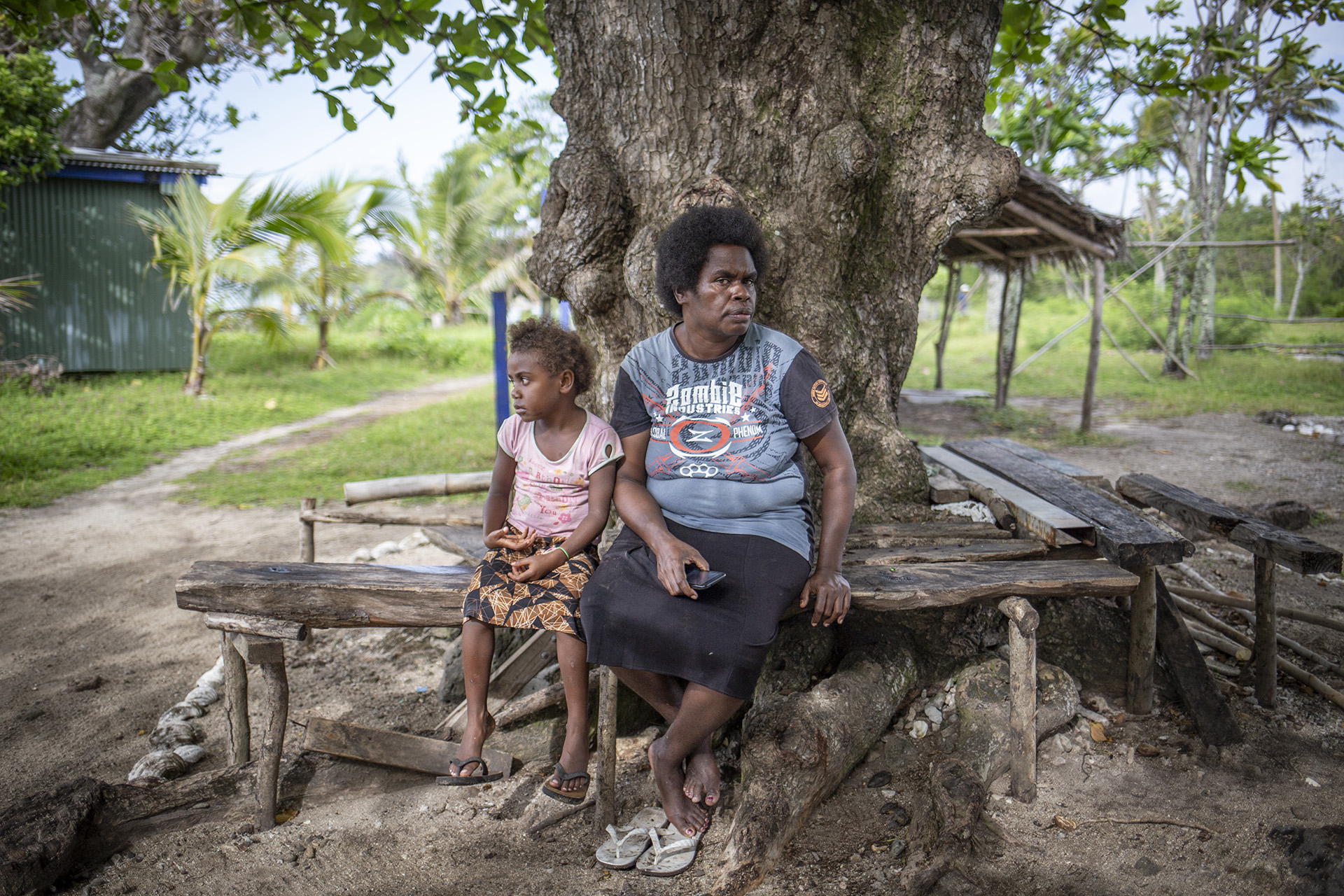
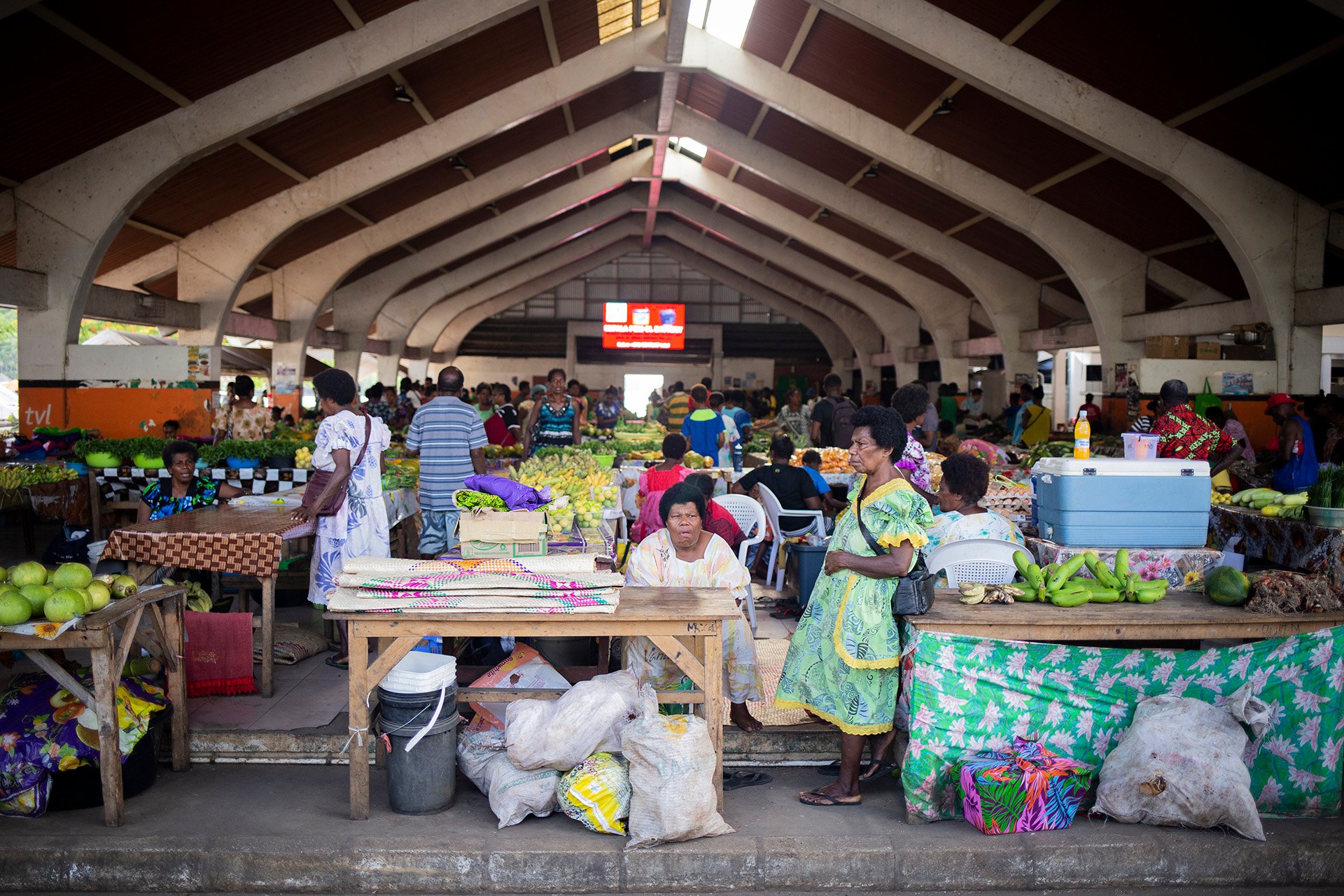
Families now supplement their diets with more expensive and less nutritious food from supermarkets – manufactured in distant countries more responsible for climate change.
Her family’s diet was once heavy on root crops and vegetables; now she buys rice, biscuits, and noodles. Her parents, she said, could always depend on the land: “They did not go to the market.”
Kalo is also trying to defend her community by helping them adapt to the changing climate.
Each week, she leads a meeting where the women of the village voice their concerns, and discuss how to share dwindling resources to avoid conflict. Food supplies, rising costs, and lost farming income are a constant concern.
In one meeting, women from farming families worried they couldn’t send their kids to school because they couldn’t afford the equivalent of $170 in yearly school fees. The women agreed to cover the costs as a group – the community stepping in to provide because the land could no longer.
Kalo is also experimenting with new varieties of crops in her small garden, which she hopes will be more resistant to the shifting climate. A former development worker, she travels from island to island teaching women and young people how to plant similar, more sustainable gardens, and how to change their techniques to adjust to the new seasons.
But adapting to the changing weather is reaching its limits, Kalo fears.
“I am worried,” she said. “If we cannot adapt, it could be more dangerous for us.”
Climate politics
Climate activists say adapting to extreme weather can only go so far in countries like Vanuatu, and in communities like the ones on Pele and Emao islands.
Wealthy countries have promised $100 billion a year in climate funding to help vulnerable nations. Available financing falls short of these pledges, and most of it is for projects focused on mitigation – reducing emissions – or adapting to disaster risks.
Blocs of vulnerable countries have pushed for new funding to cover loss and damages. Vanuatu, for example, says it needs support for the resettlement of coastal communities, reconstruction after extreme storms, crop insurance, and local emergency response funds.
But wealthy nations have opposed attempts to establish formal compensation for climate damages. This leaves low-income countries paying for disasters through national budgets and short-term humanitarian appeals, and funding recovery through development loans.
The Green Climate Fund, the main pool for climate financing, has only allocated $23 million to Vanuatu, channelled through a single project. In contrast, the government estimates the damage from a single storm, Cyclone Harold, exceeded the equivalent of $440 million.
The money simply doesn’t meet the growing needs, said Regenvanu – part of the reason why he’s pushing to take the issue to the ICJ.
“The funds are insufficient,” he said. ”Otherwise, we would not consider taking legal action.”
Regenvanu has spent parts of the last two years trying to find allies for his cause. He wants other Pacific nations just as threatened by climate change to come on board, but some are hesitant.
“We had some pushbacks,” said Willy Missack, a humanitarian coordinator who leads Regenvanu’s legal task force.
Some countries may worry that wealthy nations will cut development funds if they get involved: “This fear is not entirely unfounded,” said Ott, the ClientEarth lawyer.
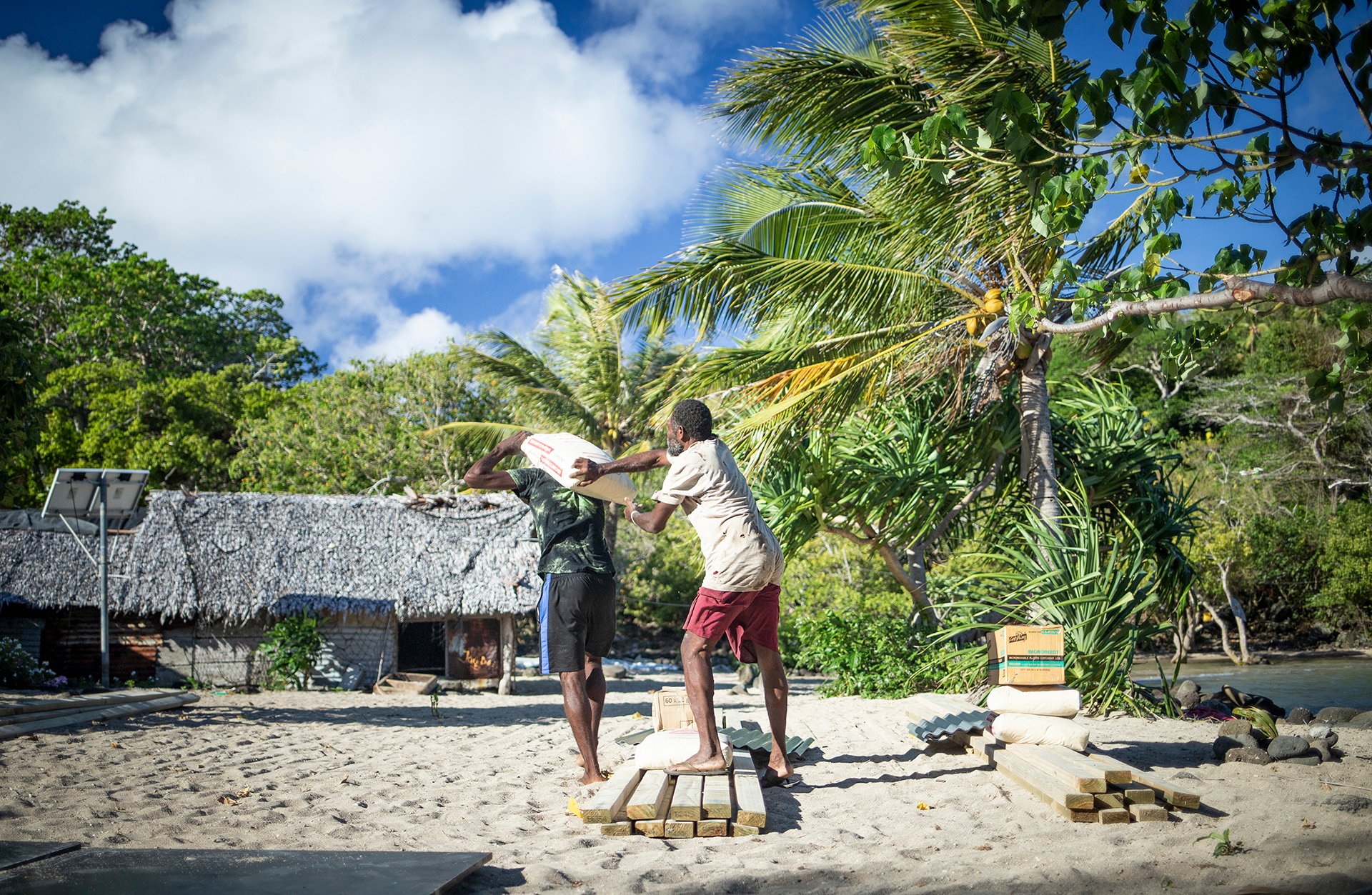
Galvanising political support is just the first hurdle. If the ICJ were to consider the issue, Regenvanu and his team would need to prove the link between oversized emissions in one country and extreme weather damages in another.
It’s one of the unsolved problems of climate law. But the science behind linking specific disasters to climate change is growing. In the last year, so-called “extreme event attribution” studies have found evidence of climate change’s role in heat waves or extreme rains in a range of places, from Australia to Siberia.
In a first-of-its kind case, a Peruvian farmer launched a lawsuit against German energy giant RWE using attribution science to back up his claims. He argued that the company’s contributions to global emissions were partly responsible for melting the glaciers that were flooding his town in the Peruvian Andes. He demanded 17,000 euros in compensation. In 2017, a German appeals court ordered that evidence be heard in the case, which is ongoing.
While activists in Vanuatu weigh their options, people like Jeffrey Daniels worry that any legal measures will come too late.
Families have already left Marow in droves after Cyclone Pam devastated the community. The village was once home to 350 people, but roughly a quarter are gone. Those who remain will have to move their homes before the ocean submerges them.
The tell-tale warnings are marked on Daniels’ home, and throughout his emptying village. The lower halves of corrugated iron huts are covered in rust. A graveyard, perched precariously on the tip of the island spit, will be the first to vanish beneath the waves.
Research for this story was supported by Netzwerk Recherche, Stiftung Mercator, and Otto Brenner Stiftung – foundations whose work supports reporting on climate change and other issues.
ae-fz/il/ag
